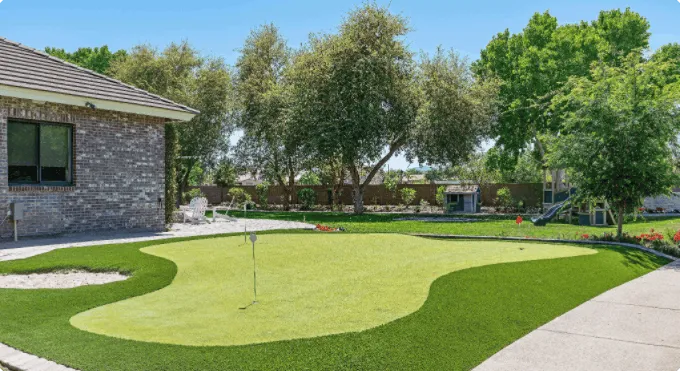
- Afrikaans
- Arabic
- Belarusian
- Bengali
- Czech
- Danish
- Dutch
- English
- Esperanto
- Estonian
- Finnish
- French
- German
- Greek
- Hindi
- Hungarian
- Icelandic
- Indonesian
- irish
- Italian
- Japanese
- kazakh
- Rwandese
- Korean
- Kyrgyz
- Lao
- Latin
- Latvian
- Malay
- Mongolian
- Myanmar
- Norwegian
- Persian
- Polish
- Portuguese
- Romanian
- Russian
- Serbian
- Spanish
- Swedish
- Tagalog
- Tajik
- Thai
- Turkish
- Turkmen
- Ukrainian
- Urdu
- Uighur
- Uzbek
- Vietnamese
fake lawn grass
Dec . 11, 2024 09:16 Back to list
The Rise of Fake Lawn Grass A Practical and Sustainable Choice
In recent years, the popularity of fake lawn grass, commonly known as artificial turf, has surged dramatically. Once viewed as a mere novelty, the application of synthetic grass has evolved into a practical and sustainable alternative to conventional grass lawns. This trend reflects changing attitudes towards landscaping, sustainability, and the desire for a low-maintenance garden option.
One of the primary advantages of fake lawn grass is its low maintenance requirements. Unlike traditional grass, which requires regular mowing, watering, fertilizing, and pest control, artificial turf eliminates such burdens. Homeowners can say goodbye to the weekly chore of lawn mowing, the need to purchase fertilizers, and the worry of pest infestations. This is particularly appealing for busy families, elderly individuals, or anyone seeking to simplify their outdoor upkeep. Furthermore, artificial grass does not require the same level of hydration as natural grass, making it an environmentally friendly choice, especially in regions prone to drought.
Water conservation is a pressing concern worldwide, and fake lawn grass significantly contributes to reducing water usage
. Traditional lawns can consume thousands of gallons of water each year, depending on the climate and grass variety. In contrast, synthetic grass is virtually maintenance-free in terms of water usage, requiring only occasional rinsing to remove debris and maintain its appearance. This not only decreases water bills but also supports local and global efforts to conserve water in an era of climate change and growing population.Moreover, the environmental impact of artificial grass has improved with advancements in technology. Earlier versions of synthetic turf were often criticized for being made from non-recyclable materials and potentially harmful chemicals. However, today’s artificial grass is frequently manufactured from recycled plastics and designed to be more durable, safe, and environmentally friendly. Many brands now offer recyclable options, allowing consumers to make a choice that minimizes their ecological footprint.
fake lawn grass

In addition to practical benefits, faux grass offers aesthetic advantages. Artificial turf maintains a consistently green and lush appearance throughout the year, irrespective of the weather conditions. Homeowners no longer have to contend with brown patches or bare spots seasonally, which can mar the beauty of a garden. This year-round aesthetic appeal has made fake lawn grass a favorite choice for homeowners, businesses, and community parks alike.
Another key factor in the rise of fake grass is its versatility. It can be used in a variety of settings—from backyards and playgrounds to sports fields and golf courses. Its ability to withstand heavy foot traffic makes it ideal for recreational areas, allowing families, sports enthusiasts, and pet owners alike to enjoy the outdoors without worry. Parents can let their children play freely, knowing that they are on a safe and resilient surface that requires no harmful pesticides or fertilizers.
Despite its many benefits, some critics argue that artificial turf lacks the natural feel of real grass and can become uncomfortably hot in direct sunlight. However, manufacturers have made significant strides in addressing these concerns, with some modern turfs incorporating cooling technologies that mitigate temperature issues. Additionally, the design and texture of synthetic grass have evolved to mimic the look and feel of real grass, further bridging the gap between natural and artificial options.
As awareness grows regarding sustainable practices and low-maintenance lifestyles, fake lawn grass is poised to become an increasingly popular choice among homeowners and communities. It not only offers practicality and beauty but also aligns with the broader goals of environmental conservation and resource management. By opting for artificial grass, homeowners can enjoy a beautiful lawn without sacrificing time, money, or the well-being of the planet.
In conclusion, the rise of fake lawn grass represents a significant shift in landscaping preferences. Its low maintenance, water-saving attributes, aesthetic appeal, and modern sustainability practices position it as a compelling choice for the future. As we continue to embrace eco-friendly solutions in our everyday lives, artificial turf is likely to become a staple in residential and commercial landscapes alike, bringing with it a blend of beauty, functionality, and environmental responsibility.
-
The Benefits of Artificial Turf for Indoors
NewsJul.15,2025
-
How Artificial Grass Suppliers Ensure Quality Products
NewsJul.15,2025
-
Artificial Grass and Pets: A Space for Relaxation
NewsJul.08,2025
-
Balcony & Outdoor Decoration with Artificial Grass
NewsJul.08,2025
-
Best Indoor Artificial Grass for Home
NewsJul.07,2025
-
Best Pet Turf for Dogs: Safe & Durable Artificial Grass Options
NewsJul.07,2025
Products categories









